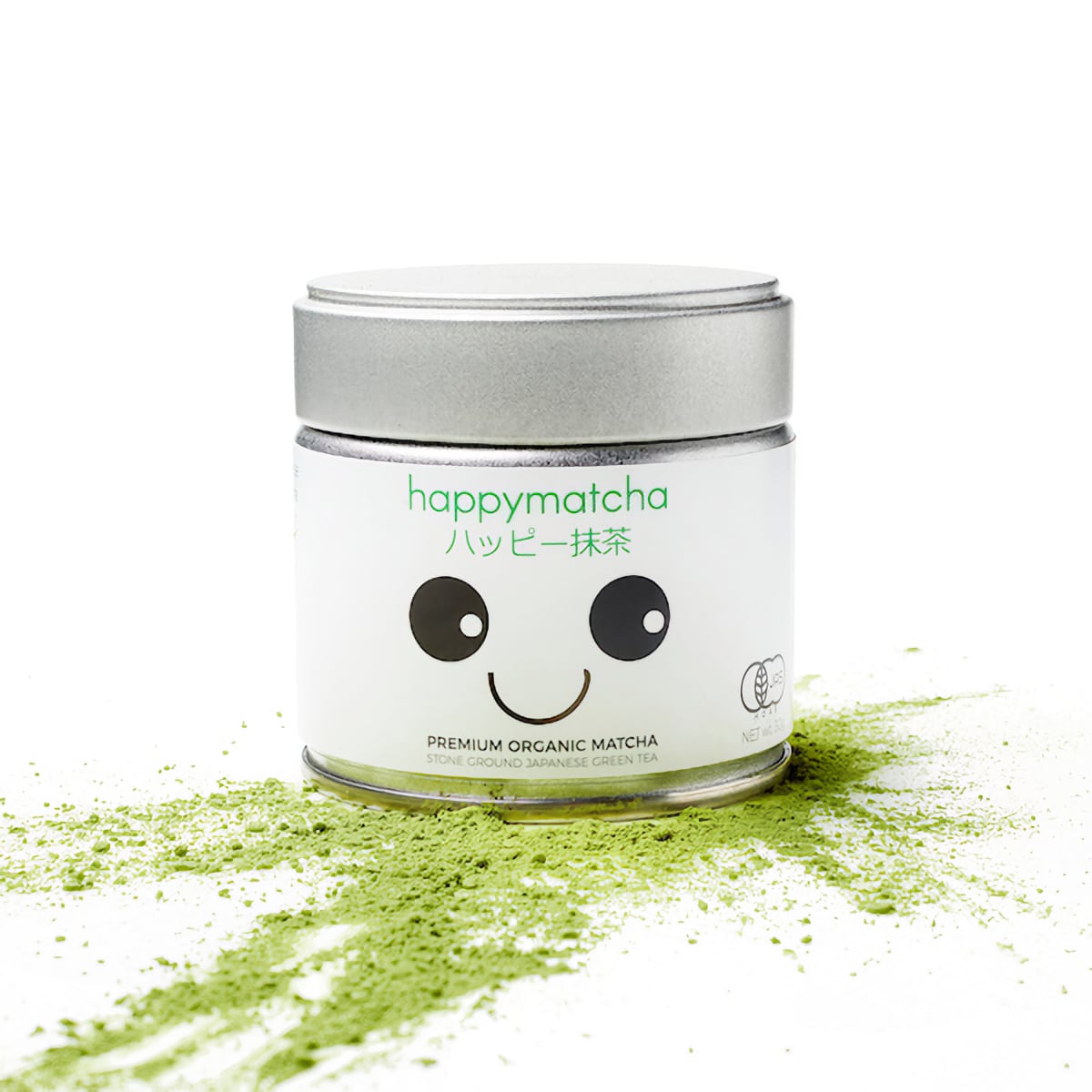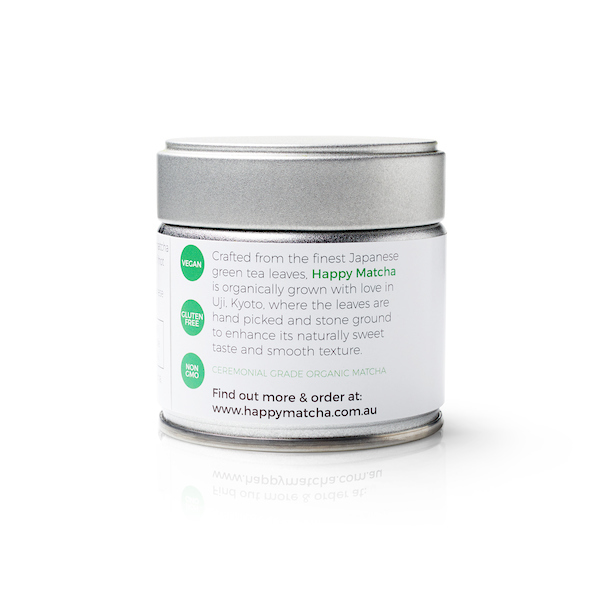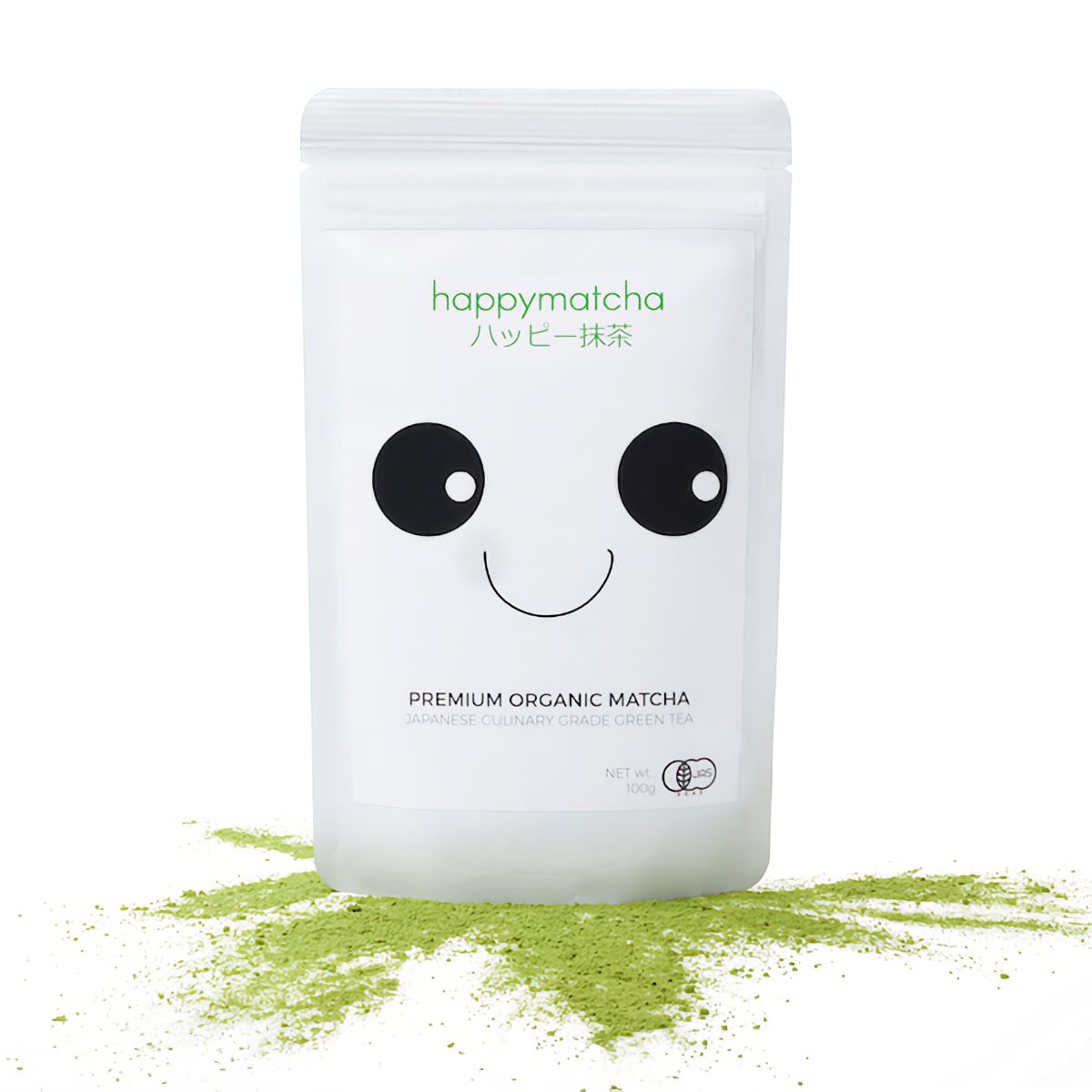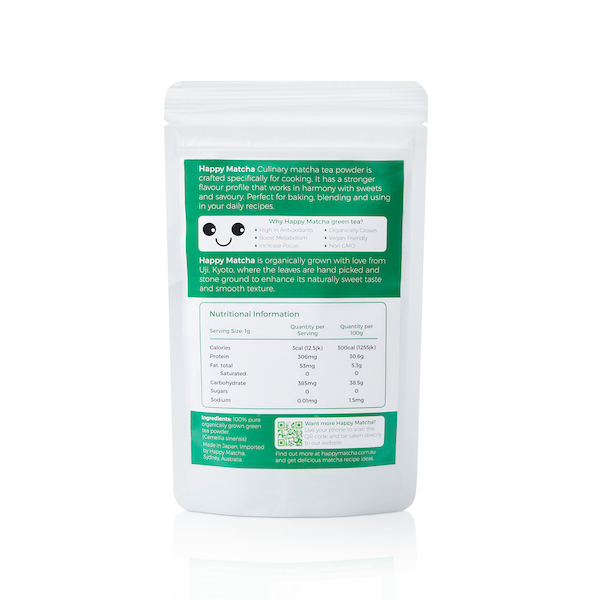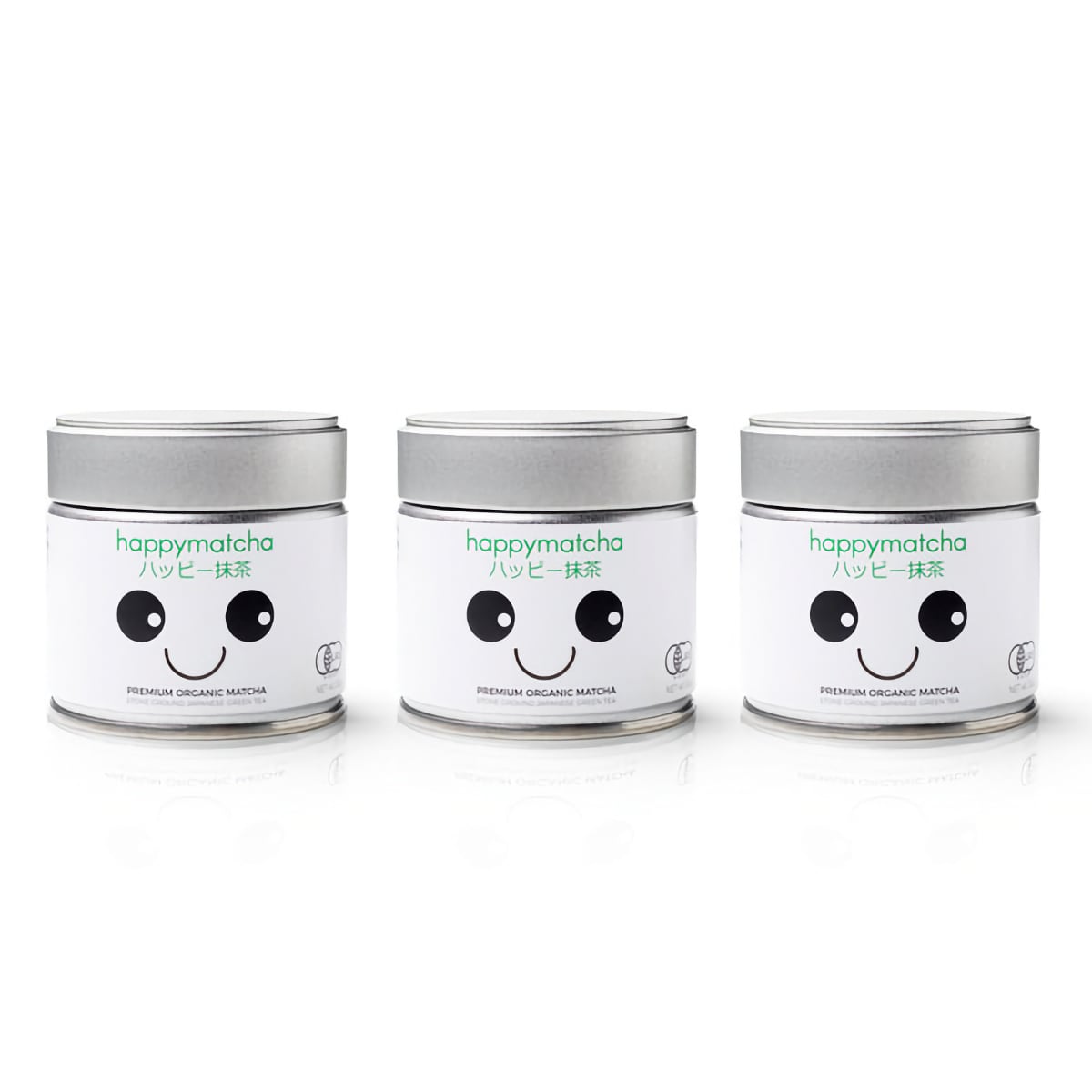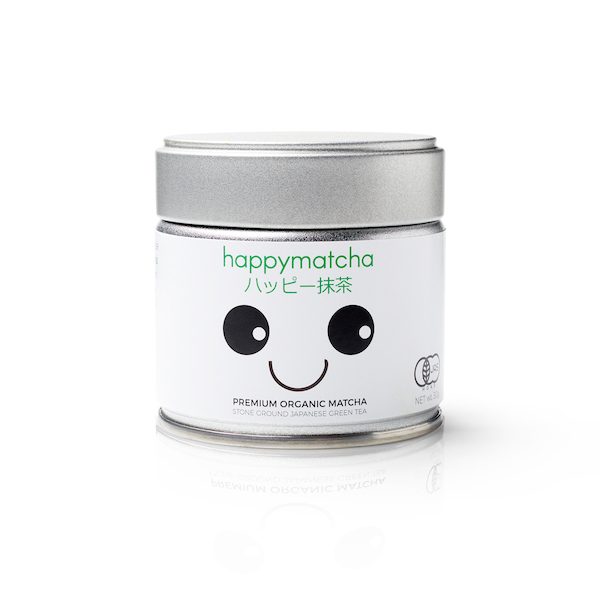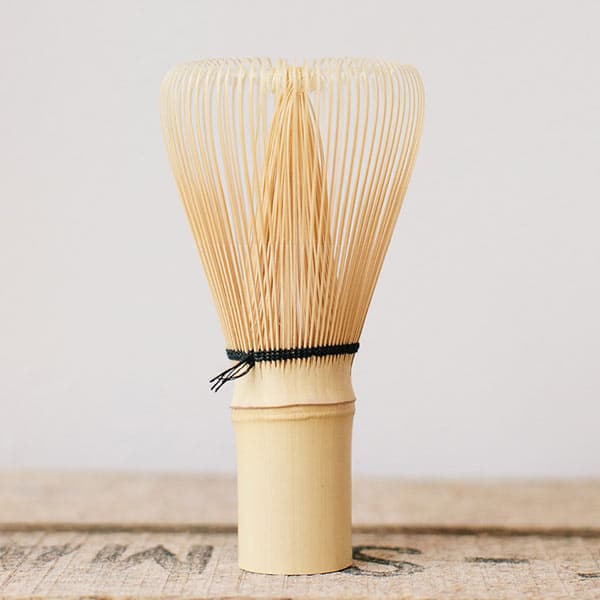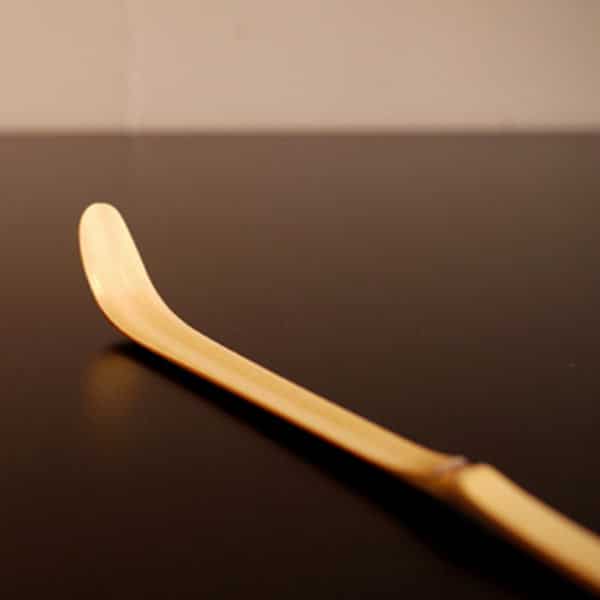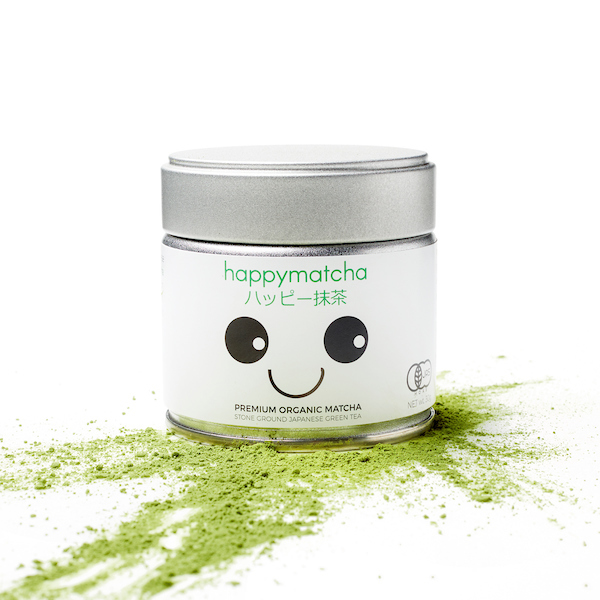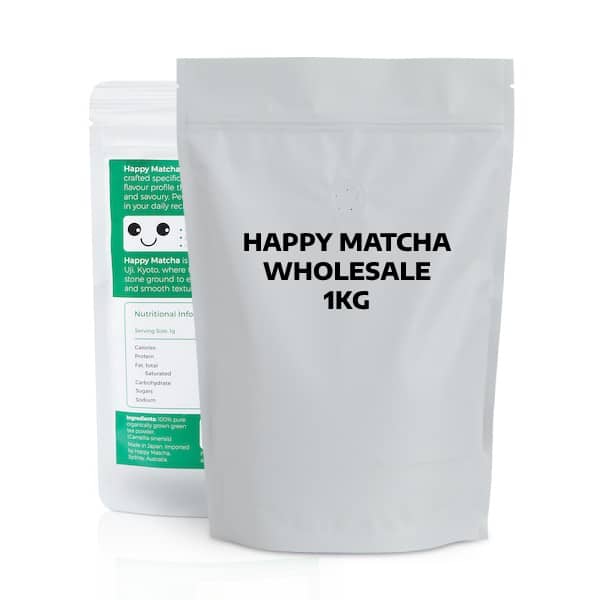No products in the cart.
The Ultimate Matcha (抹茶) Guide
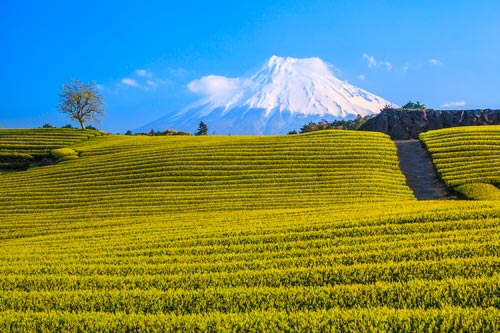
What exactly is matcha tea?
Rapidly growing in popularity all over the world today, matcha tea has long been used in traditional tea ceremonies, called chanoyu, and is a processed form of natural green tea (Camellia Sinensis). Instead of steeping tea leaves in hot water, matcha is a powdered form of a very special type of green tea leaf. These specialised tea leaves are mostly grown in the southern Japanese region, in and around Kyoto. The process of milling and growing these tea leaves that we call matcha today began all the way back in China in the 10th century, but the Japanese have since lay claims to this special type of green tea as their own – and boy have they perfected it!
Matcha’s trademark tea texture is obtained by drying, and then grinding, the tea leaf chosen for the Tencha Shiagecha. The leaves are typically shaded a few weeks before being picked, as this process increases their chlorophyll levels, which gives these leaves their distinctive and signature beautiful emerald green colour. The dried tea leaves are then stone ground (sometimes by hand, often using machines) into very fine powder. This matcha powder is then whisked together with hot water to make a suspension of ground tea in water, instead of a traditionally steeped tea mixture.
Matcha’s Caffeine Content
Matcha tea has approximately 70 milligrams of caffeine per 8-ounce serving (1 cup). This is about half the caffeine that an average cup of coffee would have. Because Tencha Shiagecha is finely ground green tea, it has more caffeine than regular, steeped green tea, as essense from the entire leaf is being consumed.A Brief History of Matcha
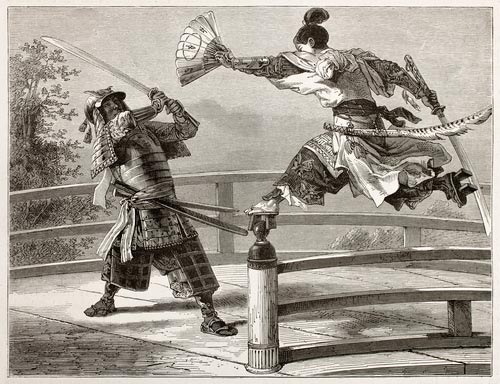 Originating all the way back from 10th century China, the process of powdering and storing tea leaves in bricks began around 618BC to facilitate the transportation of tea leaves more easily. Eventually, this tea was powdered, then mixed into hot water, pretty much the same as how we prepare matcha tea today. Slowly, it became an important part of the Zen Buddhist monks tea tradition, and this practice was brought to Japan in 1191.
Originating all the way back from 10th century China, the process of powdering and storing tea leaves in bricks began around 618BC to facilitate the transportation of tea leaves more easily. Eventually, this tea was powdered, then mixed into hot water, pretty much the same as how we prepare matcha tea today. Slowly, it became an important part of the Zen Buddhist monks tea tradition, and this practice was brought to Japan in 1191.The Tea Ceremony
This tea ceremony remains an important part of Japanese Zen Buddhism, and also an integral cog in Japan’s history. The tea ceremony was originally performed only by royalty and Samurai warriors, but eventually evolved into a popular ceremony for the upper echelons of Japanese society. To begin with, the tea ceremony was performed only for very specific groups of people because of the expense of producing matcha.The chanoyu (茶の湯), sadō, chadō (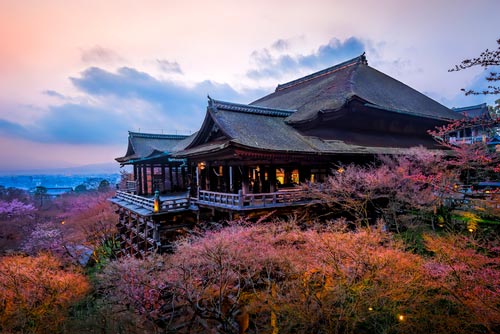 While most steps in a traditional tea ceremony are almost always followed to the letter, there could be varying degrees of differences during execution which depends on many factors, such as the purpose or theme of the ceremony, the season, location, formality of the guest list and so on.
While most steps in a traditional tea ceremony are almost always followed to the letter, there could be varying degrees of differences during execution which depends on many factors, such as the purpose or theme of the ceremony, the season, location, formality of the guest list and so on.
The basic steps of a tea ceremony begin with a ritual of washing to signify purification. The most formal of tea ceremonies involves a meal and several changes of decor in between, with guests moving in and out of the tea house to signify different portions of the ceremony.The guests are summoned back into the tea house for the serving of the actual thick tea. The ritual begins with a session of cleansing by the guests, and the host will also cleanse the tea utensils in a slow, deliberate manner. Guests are then served tea a prescribed manner and order. The guests follow specific rules such as placement of the tea bowl and order of dialogue about the tea service. The tea ceremony can last several hours depending on the nature of ceremony performed, and the number of courses of food served.
Matcha Tea Benefits
In ancient Japan, matcha tea was served to Samurai warriors before battle because of its perceived strength and vitality. In modern times, many of these claims have been scientifically proven true. Camellia Sinensis, does, in fact, have powerful detoxifying properties, as well as some weight loss properties.
Why is Matcha Good for You?
Matcha tea has many unique benefits, because of the special (and natural) way it is grown and processed. It is known for giving a feeling of calm, despite its caffeine levels. This is thought to be because of the presence of L-Theanine, a naturally occurring, non-protein amino acid found in tea leaves that promote relaxation by reducing stress and anxiety levels. High levels of this chemical is directly due to deliberately shading them a few weeks before being harvested.It is also extremely high in antioxidants, at a level much higher than regular green tea. Again, this is because of the specific growing and harvesting process involved. These antioxidants, especially the presence of polyphenols, are thought to have cancer-preventing properties.
Matcha’s Role In Weight Loss
Matcha has distinctive properties that increase metabolism, thereby assisting with weight-loss efforts. The gentle stimulants that naturally occur provides, together with the aforementioned L-Theanine means there are virtually zero negative side effects of consumption unlike other weight loss solutions offered on the market today. It is scientifically proven that matcha increases the body’s metabolism with the ability to burn fat up to almost four times faster that usual. This is due to the presence of EGCG, which also impedes the body from creating new fat cells. Amazing!
Calories in Matcha Tea
Matcha powder is extremely low in calories with less than 3 calories per gram. A regular serving of thin tea is typically 2 to 4 grams, so just drinking Tencha tea will cost you less than 20 calories a serve. Of course, matcha lattes and other drinks that are becoming popular have ingredients other than just matcha powder and water, so if you are watching your calories make sure you know what is in your drink.
Detoxing Properties
Because the tea leaves are deliberately being shaded before being harvested, match tea powder is incredibly high in chlorophyll. This chemical works in the body as a detoxifier and can pull heavy metals and chemical toxins. Matcha has even been shown to improve the body’s immune system, with some components of matcha having antibiotic properties. A single serving of matcha contains a significant amount of calcium, protein, iron, vitamin A, vitamin C, and potassium all rolled into a tiny scoop.
How to Brew Matcha
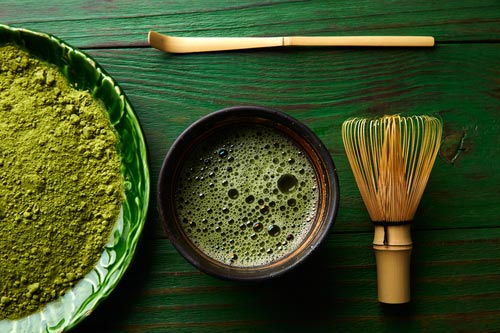 Thankfully, we no longer need to spend years studying the traditional Japanese way of observing a tea ceremony to enjoy a cup of matcha at home today. It is surprisingly easy to master, and only takes a couple of minutes to master your perfect brew.
Thankfully, we no longer need to spend years studying the traditional Japanese way of observing a tea ceremony to enjoy a cup of matcha at home today. It is surprisingly easy to master, and only takes a couple of minutes to master your perfect brew.- Step 1: Preheat your Chawan with hot water and place the prongs of the whisk in the water. Once the bowl is warm, empty it and dry with a cloth.
- Step 2: Measure about 2 scoops for Usucha (thin), or 3-4 scoops for Koicha (thick) into the dry bowl. Sifting the matcha into the bowl will eliminate any clumps and is highly recommended.
- Step 3: Measure out 70ml (for Usucha) or 40ml (for Koicha) of hot water and set aside to cool down to about 70 degrees celsius. Note: Boiling water will burn the matcha powder, creating a bitter taste. This should be avoided.
- Step 4: Poor the water in from the sides and start whisking until all the powder is suspended in the water. For Usucha, whisk in a brisk “W” motion to create a nice frothy texture. For Koicha, go gentle and use a 360-degree motion, while trying not to create any froth.
- Step 5: Sit back and enjoy your Happy Matcha tea creation!
How Much Matcha Should I Use?
The traditional formula is to sift between 1 to 2 grams of powder, placing it in a small tea bowl or chashaku, then adding two ounces of hot water (70 degrees celcius). If you plan to drink more than 2 ounces of tea (and you probably will), then add between 4 and 8 grams of sifted tea for 8 ounces of water. The matcha is then whisked vigorously to dissolve the powder and create the suspension of the tea in water. You may experiment with this on your own and figure out if you prefer a stronger or less potent variation. Practice makes perfect!
How Much Matcha Can I Drink In A Day?
Because matcha tea is so concentrated in its powder form, even one serving will give you many of the great benefits we have covered. However, if you enjoy the taste and want to reap even more of health benefits out of your matcha tea, you can definitely drink more than one serving. In fact, many Japanese and Chinese drink up to 10 cups a day! Just be sure to remember that while it does not contain as much caffeine as a cup of coffee, it does have caffeine in it, so if you are sensitive to caffeine, do watch how much you are drinking (as you would with any caffeinated beverage).
Why Do I Need To Whisk My Matcha?
While you can definitely enjoy a cup of matcha tea without all the trappings of a traditional tea ceremony, many of the ceremonial elements do serve a specific purpose in the brewing of a cup of matcha tea. The sifting helps remove lumps from the powder that are present in the tea, while using a proper type of whisk (also called chasen) and tea bowl (chawan) help facilitate the correct whisking motion to assist the matcha tea powder in dissolving perfectly.The ideal outcome during the preparation of a cup of matcha is to have light foam on top of the tea, with small bubbles, not large ones. The ideal taste of the hot drink should be grassy, slightly bitter and slightly sweet.
What Are The Different Grades of Matcha And Why Is It Important?
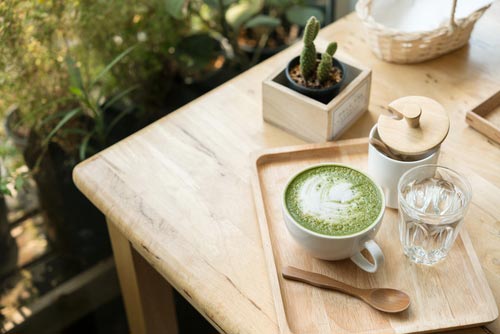 The thick tea usually prepared in traditional tea ceremonies is brewed with the highest grade of Tencha powder. The highest grades of matcha powder have a sweet, intense flavour compared to lower grades. Grades of matcha powder differ in other ways too – their original location on the tea bush (top or bottom), the way they are processed, and the treatment of the leaves during the grinding and packing process are all factors determining the eventual grade of the matcha powder produced.Ceremonial grade matcha is the most premium grade on the market and is the most expensive (and exclusive). The next grade of tea is the culinary grade, usually reserved for cooking, flavouring dishes and culinary projects. It isn’t necessarily a lower grade, but it has been processed differently allowing for a more bitter flavour profile that pairs well with other ingredients. This powder is often used for green tea lattes, smoothies or baked goods. Culinary grade matcha has several subcategories:
The thick tea usually prepared in traditional tea ceremonies is brewed with the highest grade of Tencha powder. The highest grades of matcha powder have a sweet, intense flavour compared to lower grades. Grades of matcha powder differ in other ways too – their original location on the tea bush (top or bottom), the way they are processed, and the treatment of the leaves during the grinding and packing process are all factors determining the eventual grade of the matcha powder produced.Ceremonial grade matcha is the most premium grade on the market and is the most expensive (and exclusive). The next grade of tea is the culinary grade, usually reserved for cooking, flavouring dishes and culinary projects. It isn’t necessarily a lower grade, but it has been processed differently allowing for a more bitter flavour profile that pairs well with other ingredients. This powder is often used for green tea lattes, smoothies or baked goods. Culinary grade matcha has several subcategories:- 1. Premium grade
- 2. Cafe grade
- 3. Ingredient grade
- 4. Kitchen grade
- 5. Classic grade
Matcha Recipes
Matcha tea can be used in many drinks and Western style baking recipes, and there is a sea of information on the internet on the latest recipes and culinary creations possible with matcha green tea, but here are some of our favourites:
Matcha Drink Recipes
- Traditional matcha green tea – Powder and hot water whisked in the traditional manner.
- Matcha green tea latte – Dissolved with hot water, and steamed milk poured over the top.
- Matcha mint iced tea – Dissolve powder in hot water, pour over ice and crushed mint leaves
- Matcha green tea milkshake – Add cooled matcha green tea to vanilla ice cream and cold milk. Blend to desired consistency.
Matcha Baking Recipes
Matcha can be used to flavour everything from cakes to cookies. Here are a few ideas to get started on in your baking project:- Matcha Green Tea Muffins
- Matcha and Almond Cupcakes
- Matcha White Chocolate Mouse
- Matcha Sugar Cookies
- Matcha Cheesecake
- Matcha and White Chocolate Chip Cookies
- Matcha Green Tea Frosted Donuts
What Exactly Is “Ceremonial Grade Matcha”?
Ceremonial grade tea powder is used for, you guessed it, ceremonial tea purposes. This premium powder is made with the youngest and most intricately grown and harvested tea leaves, and is also processed in the most careful manner. The texture is delicate, and the leaves are ground slowly to make sure that the grindstones don’t heat up to keep the delicate flavour of the tea consistent. This grade of Tencha is sweet and grassy with very few bitter notes. Ceremonial grade matcha is made with leaves that have been entirely deveined, and all stems have been removed.Ceremonial grade powder should be used only as tea and nothing else. It is easily recognisable because of its vibrant, green colour. The delicate taste will be spoiled by milk, chocolate or other ingredients. While this is the most expensive grade of matcha, the beautiful flavour, colour and texture are well worth it!
And What Do You Mean By “Organic Matcha”?
As with any other organic crop, organic matcha is grown without herbicides, pesticides while using only natural fertilisers. The tea bushes are also protected from environmental contaminants. While this tea is certainly organic, the flavour profile is not the same as it is with conventionally produced matcha. Because matcha derives its flavour from the amino acids produced by the growing and production process, the taste of the organic matcha is less intense as the amino acid profile is lower.
We hope this starter guide on matcha has helped you learn what makes it so special. We hope we have inspired you to try it either as a drink, or include it as an ingredient in one of the many recipes out there!
